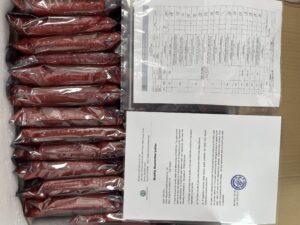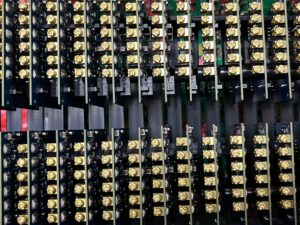PCB Fabrication Assembly
South-Electronic
Choose South-Electronic for top-notch quality, dependability, and great value in your PCB manufacturing needs. See the difference with our full-service PCB Fabrication Assembly services — from initial design to finished product, we guarantee accuracy, durability, and compliance with the highest industry standards.
Your Premier Partner in PCB Fabrication and Assembly
Welcome to South-Electronic. We provide top-notch PCB Fabrication Assembly services that are known for their accuracy and reliability.
Our PCB assemblies are perfect for a wide range of applications. We offer rigid, flex, and multi-layer PCBs that can be customized to meet your specific electronic needs. Whether you need to improve the efficiency of your consumer electronics or ensure that your industrial controls operate reliably, our PCB Fabrication Assembly services are designed to deliver efficiency and precision. When you choose South-Electronic, you can count on consistent quality and innovation for your electronic projects. Our PCB assemblies will enhance the performance and reliability of your devices. Trust us to provide excellence and creativity for your industry.
Why Choose South-Electronic?
- Flexibility in Ordering
You get exactly what you need, no matter the order size.
Whether it’s a single piece or thousands, we’re ready to fulfill your order with the same dedication to quality and precision - Guaranteed Satisfaction
Your peace of mind is guaranteed.
As an ISO9001 certified factory, we are committed to delivering top-quality products and maintaining clear communication. - Comprehensive Service
Get everything you need in one place.
From design to delivery, our advanced technology and manufacturing capabilities guarantee that your order is completed to the highest standards. - Fast Delivery
You stay on schedule with our fast turnaround times.
Our streamlined production ensures fast turnaround times, so you get your products when you need them, without delays. - Guaranteed Satisfaction
You’ll appreciate the confidence that comes with working with an ISO9001 certified company.
We prioritize clear, transparent communication and hold ourselves to the highest standards, ensuring that your 8-layer PCBs not only meet but exceed your expectations for performance, durability, and precision.
Related Project We had Done
Customer Reviews
engineer
thank you, guys, the boards are really good, i am really happy to receive my boards, the components are perfect!
Operation Manager
South-Electronic is my first PCBA supplier in China. The service and quality are excellent, and the after-sales support is also very impressive. Good Job!
Common Questions
Most Popular Questions
South-Electronic provides comprehensive PCB Fabrication Assembly services, including single-sided, double-sided, and multilayer PCB assemblies. Our services are tailored to meet the specific needs of various industries and applications.
Yes, we offer great flexibility in order quantities, catering to needs as small as one piece. This flexibility is perfect for prototype development or small batch production.
Our facilities are ISO9001 certified, ensuring that all PCB assemblies meet the highest standards of quality and reliability.
We employ rigorous testing and quality assurance processes, including material selection and prototyping, precision manufacturing, and extensive testing of each assembly before delivery.
Our PCB assemblies are used in a variety of industries, including consumer electronics, industrial controls, automotive, telecommunications, and healthcare, among others.
Yes, we provide a consultation and design service where we work closely with you to understand your specific needs and develop PCB assemblies that perfectly fit your project requirements.
Changes can be accommodated during the prototyping phase to ensure that the final product meets your expectations. We strive to be flexible to ensure customer satisfaction.
Send us a message
The more detailed you fill out, the faster we can move to the next step.
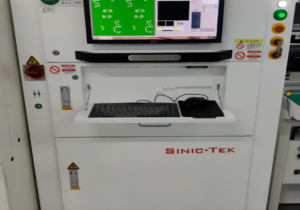
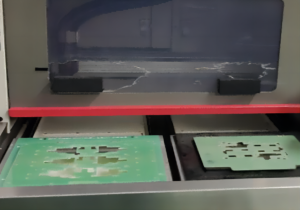
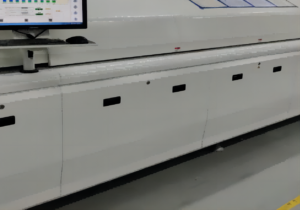
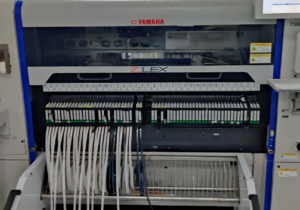
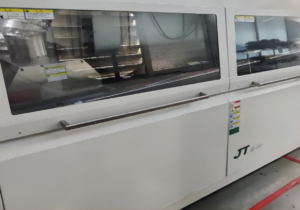
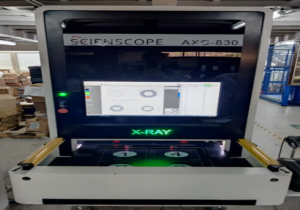

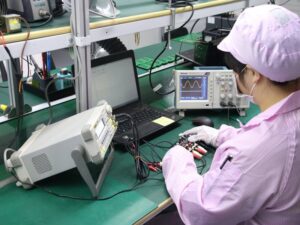

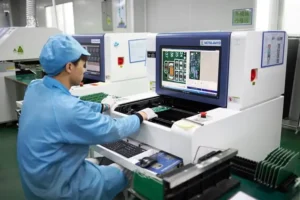



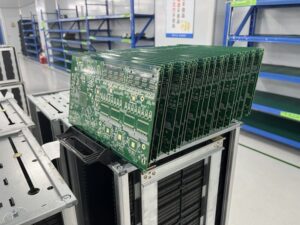

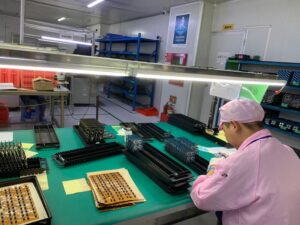
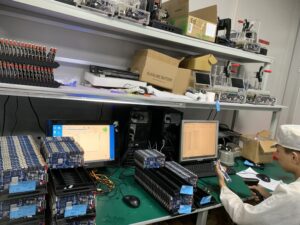


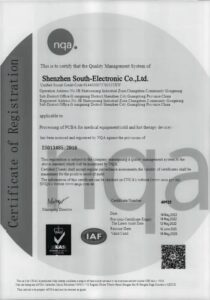
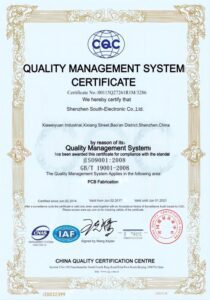
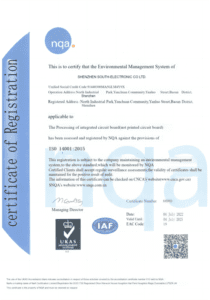






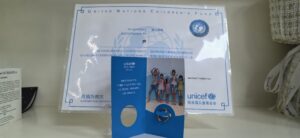

The Complete Guide For PCB Fabrication Assembly
Contents
Chapter 1
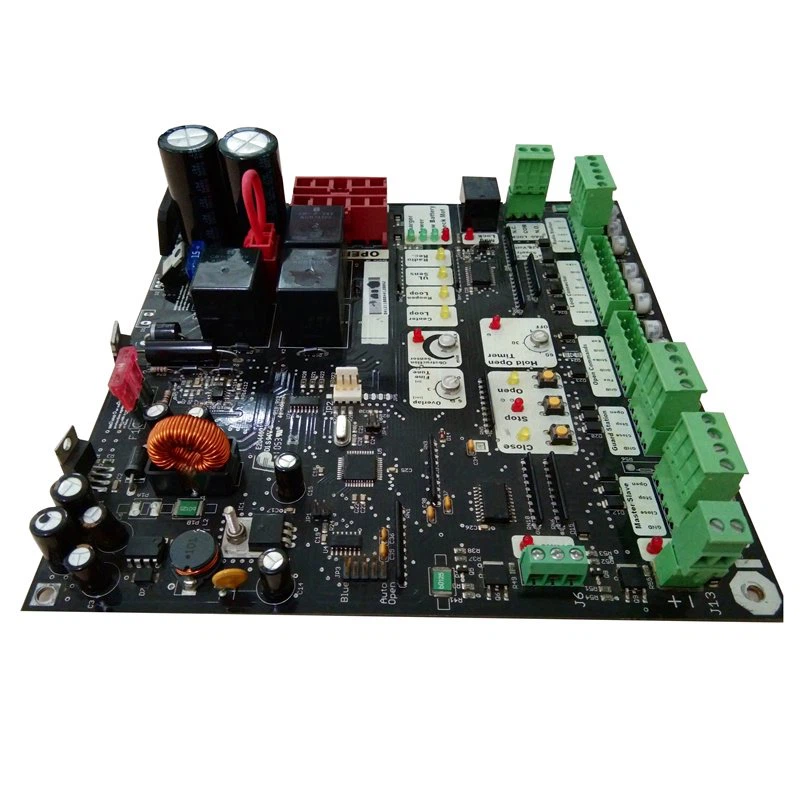
Introduction to PCB Fabrication Assembly
PCB Fabrication and Assembly is a critical process in the world of electronics manufacturing. PCBs are the backbone of most electronic devices, providing mechanical support and electrical connections between components. Here is an overview of the importance and intricacies of PCB fabrication and assembly:
What is PCB Fabrication?
PCB fabrication is the process of creating the physical structure of the circuit board. This involves several steps, from design layout to the finished product:
- Design Layout: Engineers design a schematic, which is then converted into a digital layout using specialized CAD software. This layout includes component placement and the routing of electrical connections, known as traces.
- Material Selection: The base material, typically a fiberglass-reinforced epoxy laminate (FR-4), is chosen for its durability and insulating properties. Copper is used for conducting paths, along with other elements tailored to specific device needs.
- Patterning and Etching: The design is printed onto the board, and unwanted copper is etched away, leaving only the desired circuit paths.
- Drilling and Plating: Holes are drilled for component leads and vias, which are plated to ensure conductive paths between different layers of the PCB.
- Solder Mask and Silkscreen: A solder mask is applied to protect copper traces and prevent soldering errors. The silkscreen layer is added to print labels and reference indicators on the PCB.
What is PCB Assembly?
PCB assembly is the process of placing and soldering electronic components onto the fabricated PCB. This includes:
- Component Placement: Automated machines accurately place components onto the PCB according to the design specifications. This can include resistors, capacitors, integrated circuits (ICs), and more.
- Soldering: Various soldering techniques are used to secure the components in place and establish electrical connections. Surface-mount technology (SMT) and through-hole technology (THT) are common methods.
- Inspection and Testing: After assembly, PCBs undergo thorough inspection and testing to ensure they function correctly and meet quality standards. This includes visual inspections, automated Optical Inspection (AOI), and functional tests.
Importance in Electronics Manufacturing
PCBs are essential in all electronic devices, from smartphones and computers to medical devices and automotive electronics. The precision and efficiency of PCB fabrication and assembly directly impact the performance, reliability, and lifespan of the final electronic product.
The demand for smaller, more efficient, and more complex electronic devices continues to grow, making PCB fabrication and assembly more important than ever. As the foundation for technological innovation, understanding and investing in advanced PCB processes is critical for any company looking to stay competitive in the electronics market. This guide aims to provide you with a comprehensive understanding of these processes, ensuring your journey in electronics manufacturing is informed and successful.
Chapter 2
Understanding PCB Types and Uses
PCBs come in different types, each designed to meet specific requirements and challenges posed by different electronic applications. Understanding these types and their uses is crucial for selecting the right PCB for your project. Here’s a detailed look at the different types of PCBs and their applications across industries:
Types of PCBs
Single-Sided PCB:
- Structure: These PCBs have a single layer of substrate with conductive copper on one side. Components are mounted on one side, and the circuit’s traces are etched on the other.
- Applications: Used in simple, low-density designs such as calculators, power supplies, and certain home appliances due to their cost-effectiveness and simplicity.
Double-Sided PCB:
- Structure: Feature a substrate layer with copper layers on both sides. Components can be mounted on either side with connections established through holes (vias).
- Applications: Suitable for more complex circuits than single-sided PCBs. Common in vehicle dashboards, industrial instrumentation, and lighting systems.
Multilayer PCB:
- Structure: Consist of three or more conductive layers separated by insulating material. These PCBs allow for complex circuit designs with multiple layers stacked on top of each other.
- Applications: Ideal for highly sophisticated devices like smartphones, data storage solutions, medical equipment, and satellite systems due to their ability to support high component density and intricate designs.
Rigid PCB:
- Structure: Constructed from a solid substrate that prevents the board from bending. They are durable and provide structural support for components.
- Applications: Examples include computer motherboards, hard drives, and televisions, where a stable and non-flexible platform is necessary.
Flexible PCBs (Flex PCBs):
- Structure: Made of materials that allow the board to bend or flex, typically using a polyester or polyimide substrate.
- Applications: Used in applications requiring flexibility such as wearable electronics, cameras, and various medical devices, allowing the circuit to conform to different shapes.
Rigid-Flex PCB:
- Structure: Combine elements of both rigid and flexible PCBs, featuring layers that can be both flexible and rigid.
- Applications: Provide versatile solutions in complex systems like aerospace applications, military systems, and advanced consumer electronics, where space and weight are limited.
Applications Across Industries
Consumer Electronics: In devices like smartphones, tablets, and home appliances, a mixture of multilayer, rigid, and flex PCBs are used to accommodate advanced features while optimizing space and functionality.
- Automotive Industry: PCBs are essential for managing vehicle electronics including navigation, control systems, and infotainment, requiring durable multilayer and rigid PCBs.
- Medical Devices: Miniaturization and reliability are key, with many medical equipment employing flexible and rigid-flex PCBs to accommodate compact and portable designs, such as pacemakers and imaging equipment.
- Industrial Equipment: Double-sided and multilayer PCBs are commonly used in control systems, robotics, and machinery to support higher-performance requirements and robust operation.
- Aerospace and Defense: These sectors often use advanced multilayer and rigid-flex PCBs to handle extreme conditions and rigorous performance standards, essential in satellite communications and military hardware.
- Selecting the appropriate type of PCB based on the application and industry requirements is vital for ensuring optimal performance, cost-effectiveness, and reliability in electronic designs. Understanding these PCB types and their diverse applications empowers engineers and designers to innovate and enhance technology across various domains.
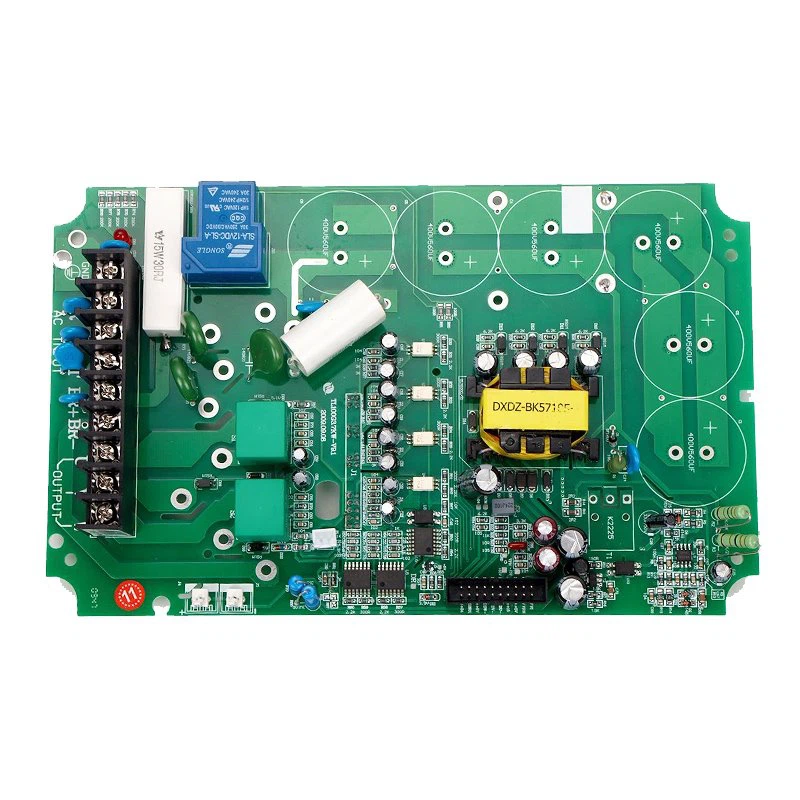
Chapter 3
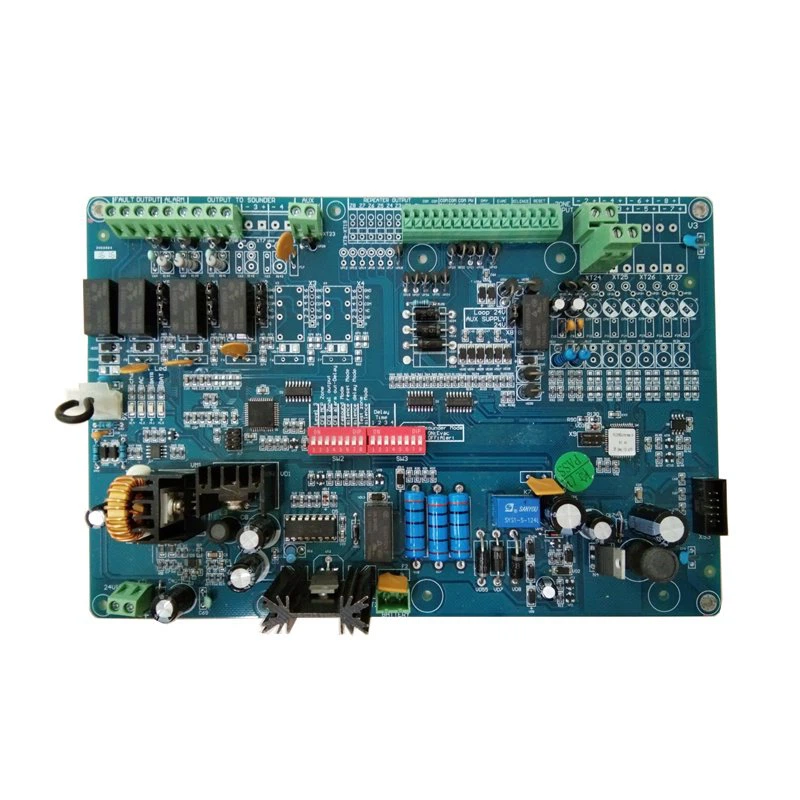
Key Components in PCB Fabrication
PCB fabrication involves a variety of materials and components, each playing a crucial role in determining the performance, reliability, and manufacturability of the final product. Understanding these materials is essential for designing effective and efficient PCBs. Here is a detailed description of the key components used in PCB fabrication:
1. Substrates
- Definition: The substrate is the base material of a PCB, providing the necessary support structure for all other components.
- Commonly Used Material: FR-4 is the most widely used substrate material due to its excellent electrical insulation properties, mechanical strength, and cost-effectiveness. It is a fiberglass-reinforced epoxy laminate.
- Specialty Substrates: High-frequency PCBs might use PTFE substrates due to their superior electrical properties at microwave frequencies. Metal-core substrates are used for applications requiring enhanced thermal dissipation.
2. Copper Layers
- Purpose: Copper foils are laminated onto the substrate to form conductive pathways or traces.
- Thickness Variations: Copper thickness is typically measured in ounces per square foot. Standard thicknesses include 1 oz, 2 oz, and 3 oz, depending on the current-carrying requirements of the PCB.
- Application: Thicker copper is used in PCBs for power electronics to handle high currents, whereas thinner copper is sufficient for signal processing.
3. Laminates
- Definition: Laminates consist of layers of the substrate material bonded with layers of copper foil.
- Types:
- Rigid Laminates: Provide a sturdy backing for components and are mainly used in non-flexible PCBs.
- Flexible Laminates: These laminates use materials like polyimide to allow the PCB to flex without damaging the conductors.
4. Prepreg
- Definition: Prepreg is a composite material impregnated with a resin system, used as an adhesive and insulating layer between laminate layers in multilayer PCBs.
- Characteristics: It provides the necessary bond strength between layers, is available in different thicknesses, and has varying resin content to meet specific thermal behaviors.
5. Solder Mask
- Purpose: A protective layer that covers the copper traces to prevent short circuits, soldering errors, and environmental damage.
- Material: Usually a polymer-based coating applied over the copper layers of the PCB.
- Additional Functionality: Solder masks come in different colors, with green being the most common, but alternatives like red, blue, and black are also available for aesthetic purposes or each version’s specific properties.
6. Silkscreen
- Definition: A layer of ink traces that is printed on the PCB for labeling component placements, warnings, and symbols.
- Materials Used: Usually a non-conductive epoxy ink that stands out against the solder mask for easy readability.
7. Vias
- Purpose: Vias are the conductive paths drilled through the substrate to connect copper traces on different layers of the PCB.
- Types of Vias:
- Through-Hole Vias: Extend from the top to the bottom layer.
- Blind Vias: Connect external layers with one or more internal layers without going through the entire board.
- Buried Vias: Connect internal layers only, facilitating more complex multilayer configurations.
8. Surface Finishes
- Purpose: Applied to copper traces to prevent oxidation and ensure good solderability.
- Common Types:
- HASL (Hot Air Solder Leveling): Economical and provides good solderability.
- ENIG (Electroless Nickel/Immersion Gold): Offers a smooth surface and excellent shelf life, preferred for high-quality and fine-pitch components.
Understanding these components is vital for engineers and designers to ensure that the PCB design is suitable for its intended application, reliable in performance, and cost-efficient to manufacture. Each component enhances specific attributes of the PCB and influences the overall functionality and quality of the electronic device.
Chapter 4
Types of PCB Fabrication Assembly Processes
Surface-mount Technology (SMT): Discuss the more modern SMT that allows for direct placement of components on the PCB surface, enabling higher component density and smaller board sizes.
Mixed Technology PCB Assembly: Introduce scenarios where both THT and SMT are used on the same PCB to benefit from the advantages of both techniques.

Chapter 5

Step-by-Step Process of PCB Assembly
From Schematic to Board Layout: Describe the initial steps of transferring a circuit schematic into a physical board layout that dictates where each component should be placed.
Stencil Creation and Component Placement: Detail the process of creating solder paste stencils and accurately placing components using automated machines.
Soldering and Reflow Techniques: Outline the methods used to solder components onto the PCB, including wave soldering for THT and reflow soldering for SMT.
Chapter 6
Testing and Quality Assurance in PCB Assembly
Types of Tests: Explain different testing methods used to ensure PCB functionality, such as In-Circuit Tests (ICT), Functional Tests, and Automated Optical Inspections (AOI).
Quality Standards in the Industry: Discuss the quality standards and certifications commonly adhered to in the PCB assembly industry, like ISO 9001 and IPC standards.
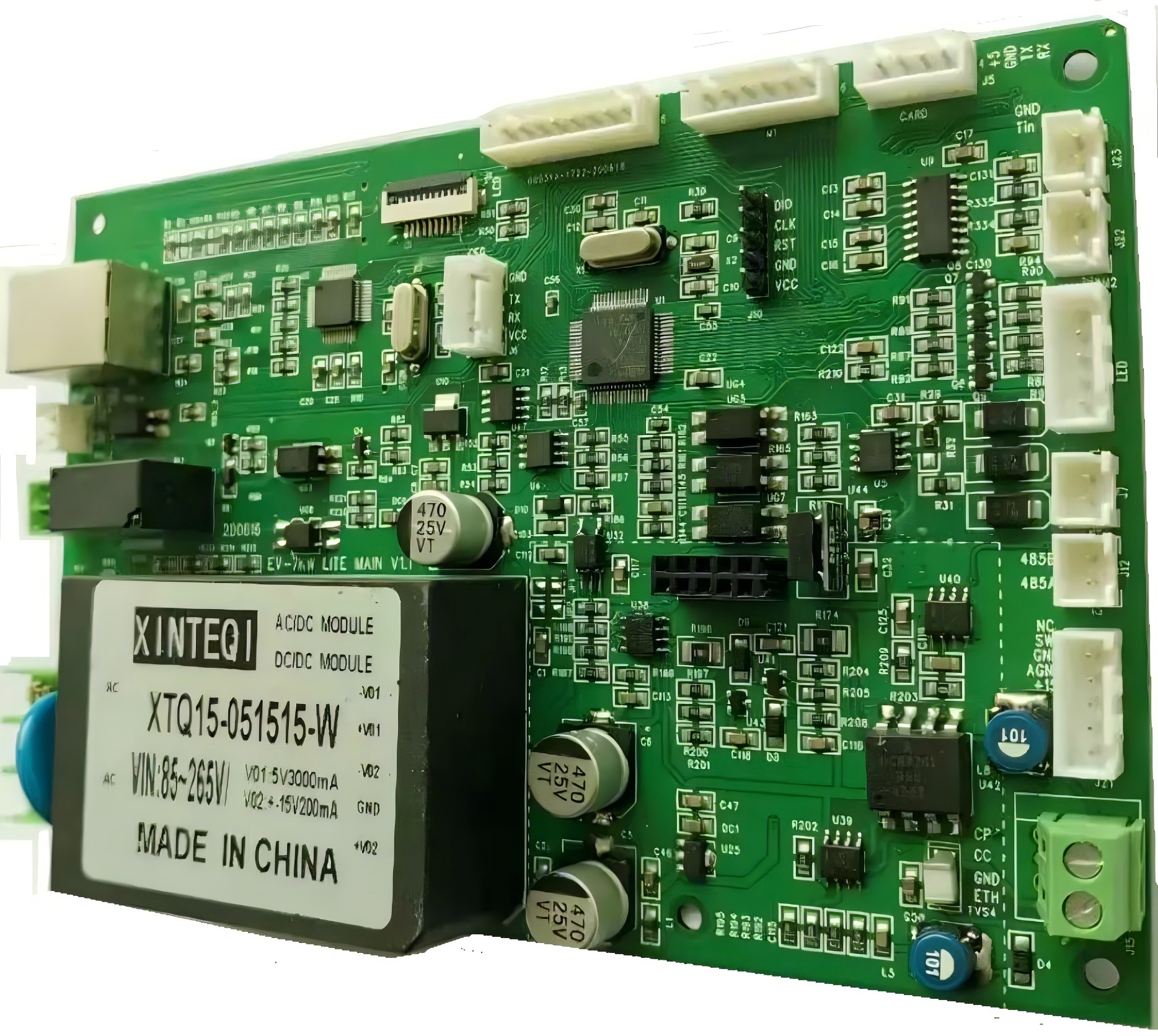
Chapter 7
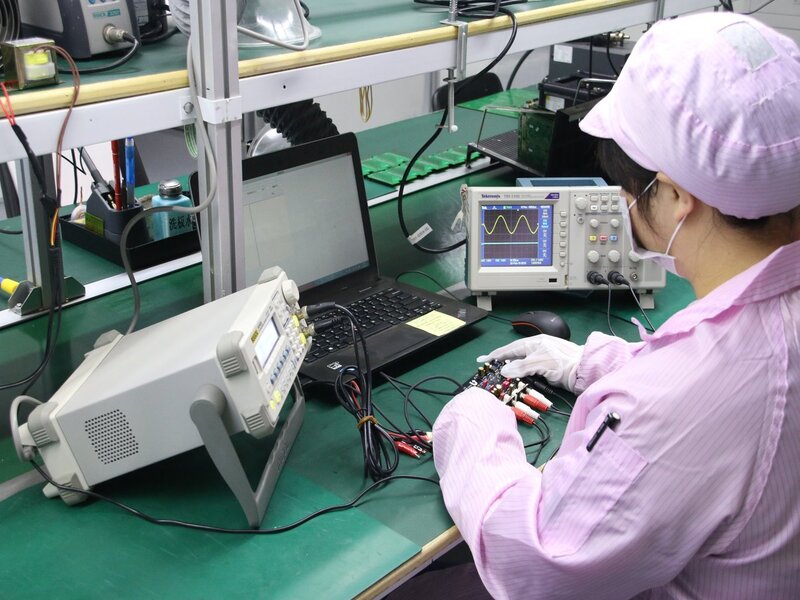
Advanced Techniques and Technologies
Introduction to HDI PCBs: Discuss High-Density Interconnect (HDI) PCBs, which feature finer spaces and lines, smaller vias, and higher connection pad density, suitable for advanced electronic devices.
Use of Flexible and Rigid-Flex PCBs: Explain the applications and benefits of flexible and rigid-flex PCBs, which combine rigid and flexible board technologies for enhanced durability and performance.
Chapter 8
Common Challenges and Solutions in PCB Assembly
Handling Complex Boards: Address the complexities involved in assembling high-density or multi-layer boards and the strategies used to mitigate assembly challenges.
Managing Supply Chain Issues: Examine common supply chain challenges such as component shortages and logistic delays, and discuss strategies to manage these issues effectively.
Ensuring Quality in High-Volume Production: Share methods to maintain consistent quality during mass production, including automation and rigorous testing protocols.

Chapter 9

Future Trends in PCB Fabrication Assembly
Automation and AI in PCB Assembly: Explore how automation and artificial intelligence are shaping the future of PCB assembly, leading to increased efficiency and reduced human error.
Environmental Considerations and Sustainability: Discuss the impact of PCB manufacturing on the environment and the steps being taken to make the process more sustainable, including recycling and the use of non-toxic materials.
Chapter 10
Choosing the Right PCB Assembly Partner
Key Factors to Consider: Discuss the essential criteria to evaluate when selecting a PCB assembly partner. This includes technical capability, production capacity, and financial stability. Emphasize the importance of compatibility with your specific project requirements and the ability to scale operations as needed.
Assessing Technical Expertise and Certifications: Detail the importance of technical expertise in handling complex PCB projects. Highlight certifications such as ISO 9001 and IPC standards, which indicate adherence to industry quality standards. Explain how these certifications can be indicative of a provider’s commitment to quality and consistency.
Evaluating Customer Service and Support: Explore the critical role of customer service in the PCB assembly partnership. Discuss how effective communication, responsiveness to inquiries, and support during and after the production process can significantly impact the success of the project.
Considering Long-term Partnership Potential: Advise on looking beyond the immediate project and considering the long-term partnership potential. This includes assessing the supplier’s track record for innovation, their responsiveness to industry changes, and their ability to offer ongoing support and development opportunities.
Case Studies and References: Recommend requesting case studies or references as part of the evaluation process. These real-world examples can provide insights into how the assembly partner has managed past projects, including challenges faced and solutions provided, which can be crucial for making an informed decision.

Get in touch
Where Are We?
Industrial Park, No. 438 Donghuan Road, No. 438, Shajing Donghuan Road, Bao'an District, Shenzhen, Guangdong, China
Floor 4, Zhihui Creative Building, No.2005 Xihuan Road, Shajing, Baoan District, Shenzhen, China
ROOM A1-13,FLOOR 3,YEE LIM INDUSTRIAL CENTRE 2-28 KWAI LOK STREET, KWAI CHUNG HK
service@southelectronicpcb.com
Phone : +86 400 878 3488
Send us a message
The more detailed you fill out, the faster we can move to the next step.


